18) Microbe-Plant Root Symbioses: Mycorrhiza & Legumes
1/12
There's no tags or description
Looks like no tags are added yet.
Name | Mastery | Learn | Test | Matching | Spaced |
|---|
No study sessions yet.
13 Terms
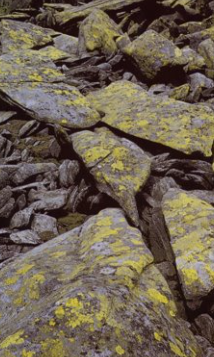
What are symbioses?
What is lichens?
Lichens has a fungal and algae / cyanobacteria component. Name them and state what each component does.
What are lichens tolerant to? What are they colinsers on? (3)
Symbioses: mutually beneficial relationship between different people or groups.
A lichen is not a single organism; it is a stable symbiotic association between a fungus and algae and/or cyanobacteria.
Mycobiont (fungus) - protects algae and absorbs minerals and water.
Phycobiont (algae) - prepares food (sugars) for fungi.
Lichens are tolerant of environmental extremes. They are pioneer colonisers on rock faces, tree bark, roofs.

What family are plants that fix N in?
Describe the family and some species that are found in it.
What is N fixation due to?
What are the products of the reaction in the diagram? (2) What enzyme catalyses it?
The Fabaceae or Leguminosae, commonly known as the legume, pea, or bean family, is a large, economically and medicinally important family of flowering plants.
N fixation is due to mutualistic bacteria that colonise roots of Fabaceae.
N2 + 8H+ + 8e− → 2NH3 + H2. Catalysed by the enzyme nitrogenase.


Genetic engineering to make plants N fixing like wheat – not reliant on artifical fertilisers.
Farmers legumes as rotational system where they capture N- leave plants in soil to die will release N into the soil.
BACK
Number of nodules decline when they cannot fix N so fitness affected.
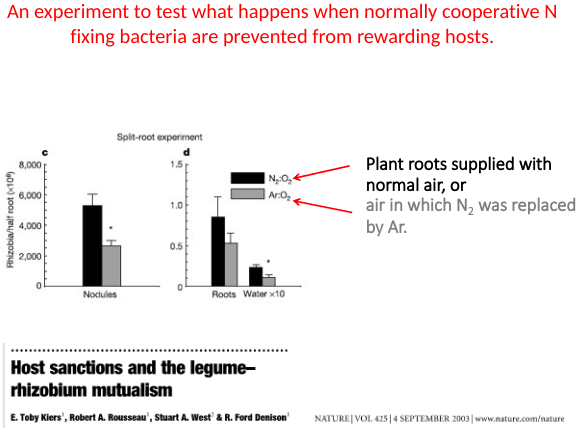
What can conferring benefit from host plant to competing bacteria lead to?
How is this prevented?
This may lead to ‘cheating’ by bacteria, e.g. gaining benefit form the host plant without ‘paying for it’ in terms of N fixation.
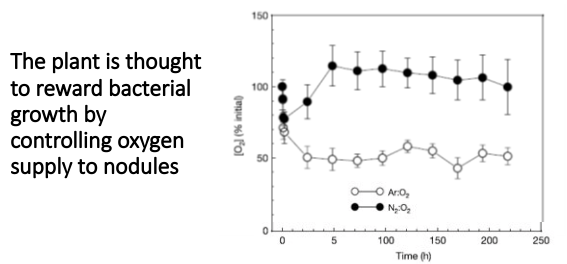
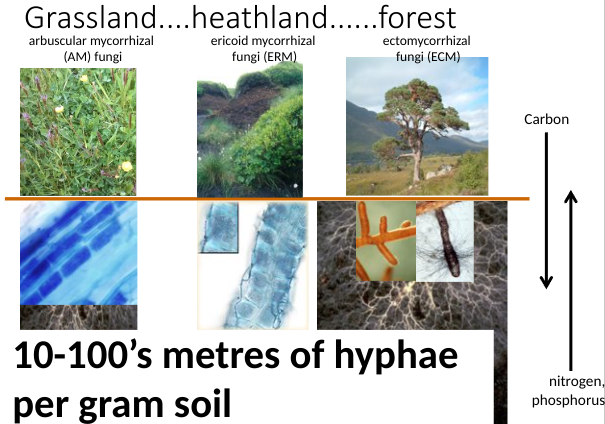
What are mycorrhizas?
What is this mutualism based on?
What % of land plants form associations with soil fungi?
Carbon moves from the autotrophic plant to the heterotrophic fungus.
Scarce mineral soil nutrients (e.g. phosphorus) are efficiently scavenged by the fungus and transported to host plant.
Read diagram
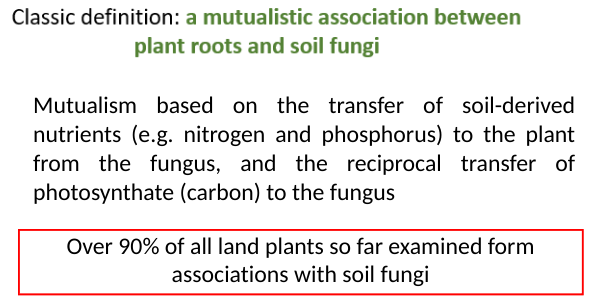
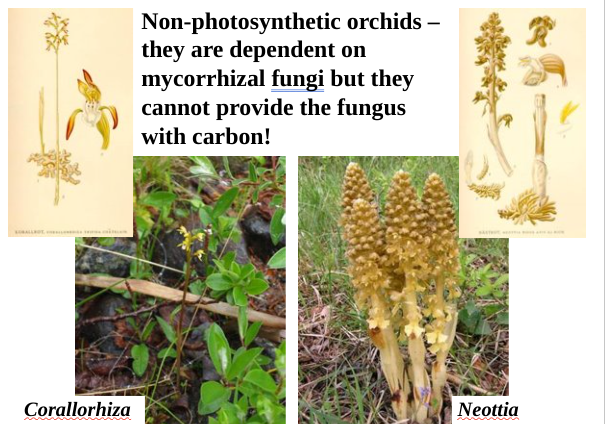
Some cannot photosynthesise in early life but photosynthesise later in life.
Fungus that delivers nutrients to green plants also make their way to yellow one because they're connected.
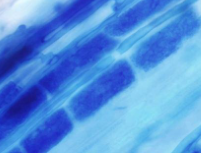
What is arbuscular mycorrhiza?
What part in the diagram shown is the arbuscle? What are they connected by?
What is the extra-radical mycelium?
How long do arbuscules last for? (days)
Arbuscular mycorrhiza (AM), a symbiosis between plants and members of an ancient phylum of fungi, the Glomeromycota, improves the supply of water and nutrients, such as phosphate and nitrogen, to the host plant. In return, up to 20% of plant-fixed carbon is transferred to the fungus.
5 and 15 days (structure constantly being made).
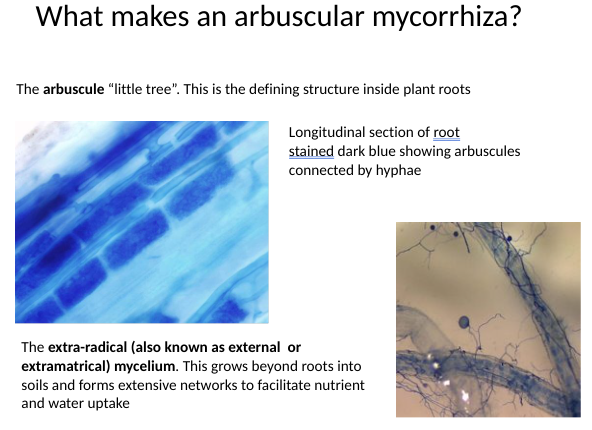
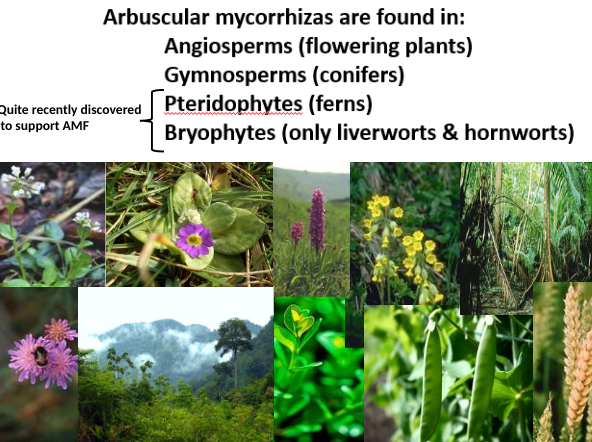
BACK
Bits near top of soil allow roots to grow far.
Biomass of fungus is as much as entire plant (underneath bit on right).
Photosynthetic activity of pine seedling fuels fungal biomass.
Root tips depends on fungal species.
Fungus coverts tips of roots.
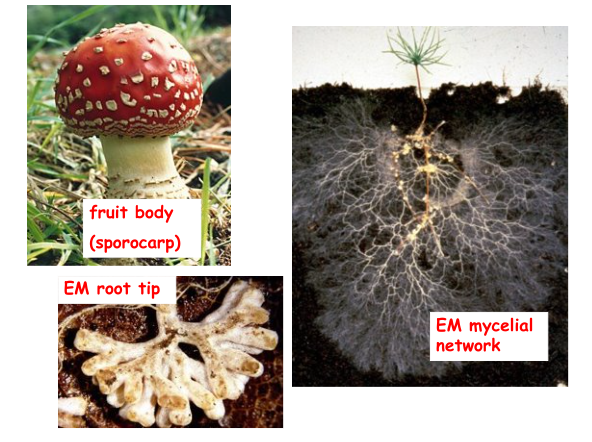
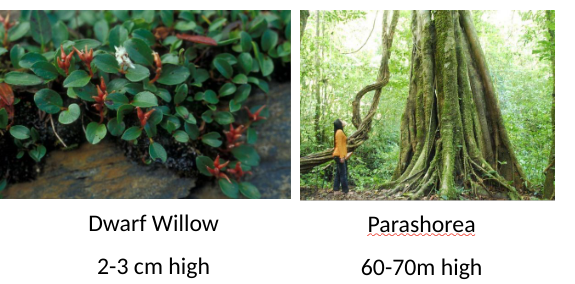
What are both of these growths fuelled by?
Carbon flow to fungi is rapid. What % of C do ectomycorrhizas receive from netcarbon fixation by trees?
Both fuelled by the activity of tiny ectomycorrhizal root tips.
Ectomycorrhizas receive up to 30% of net carbon fixation by trees (can comprise >30% of soil microbial biomass).
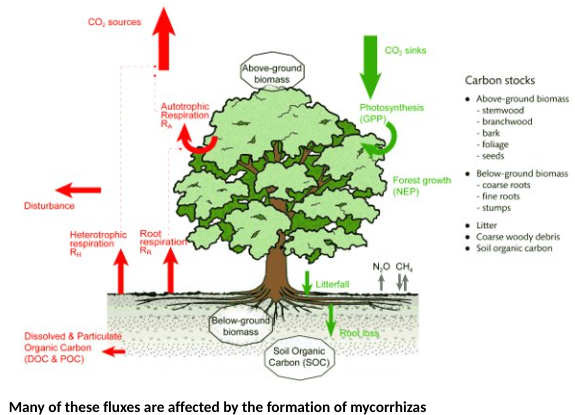
BACK

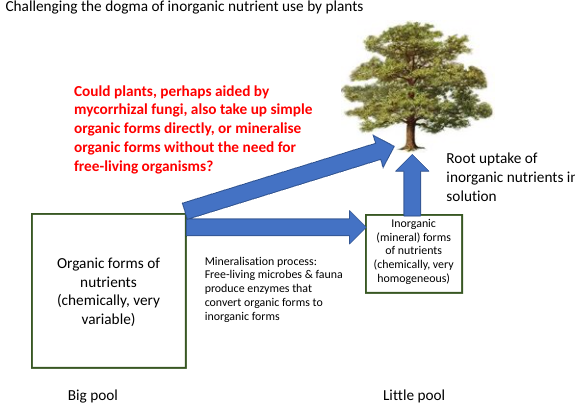
AM fungal diversity can (sometimes) determine…
What does lack of fungal diversity below ground reduce?
Read diagram
Plant productivity.
Reduces plant’s ability to capture sources.
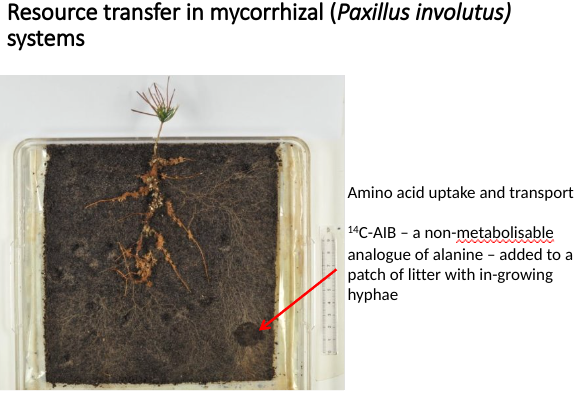
BACK
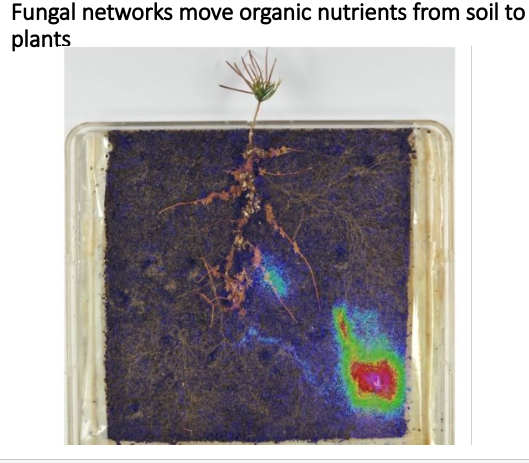
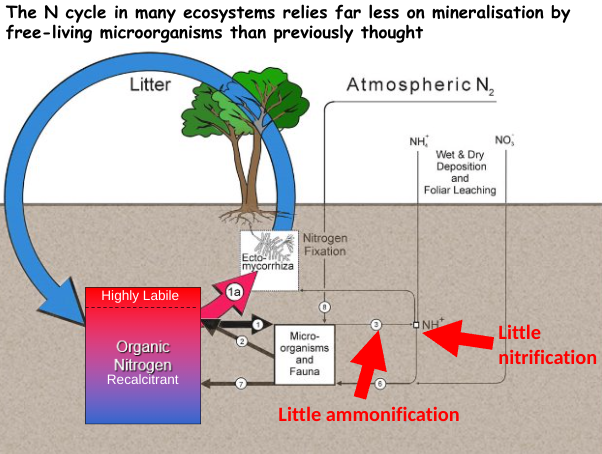
BACK
In most trials, arbuscular mycorrhizal fungi positively affected grain yield.
